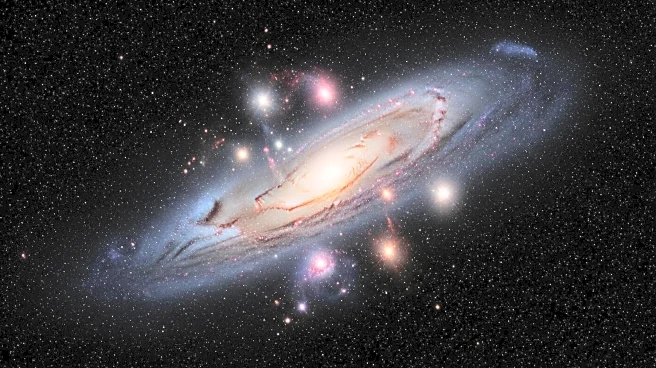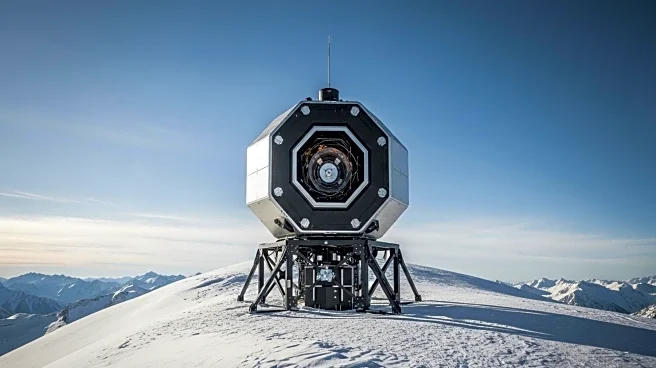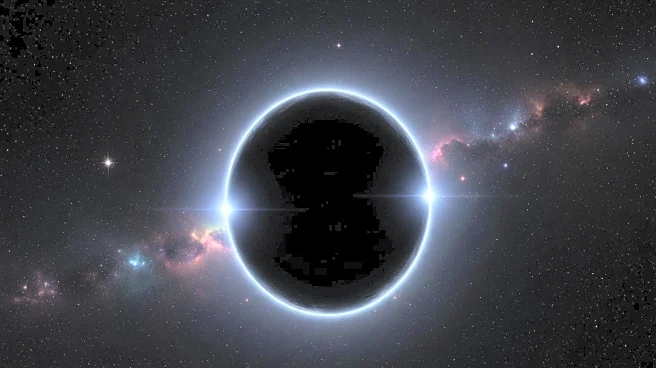What's Happening?
NASA is delving into the mysteries of dark matter, a substance that constitutes approximately 27% of the universe's mass. Despite its invisibility, dark matter plays a crucial role in shaping galaxies and cosmic structures. Scientists have been investigating dark matter since the 1930s, with significant contributions from astronomers like Fritz Zwicky and Vera Rubin. Current research involves studying gravitational lensing effects to map dark matter distribution, which could provide insights into the universe's organization and evolution.
Why It's Important?
Understanding dark matter is vital for comprehending the universe's structure and dynamics. It influences galaxy formation and movement, impacting cosmic evolution. Insights into dark matter could lead to breakthroughs in physics and cosmology, potentially revealing new particles or forces. This research is crucial for advancing scientific knowledge and may have implications for future space exploration and technology development.
What's Next?
NASA plans to continue its research on dark matter using advanced telescopes and simulations. The upcoming Nancy Grace Roman Space Telescope will aid in mapping dark matter distribution, enhancing our understanding of cosmic history. Scientists aim to identify dark matter candidates like WIMPs and axions, which could revolutionize particle physics. Collaborative efforts with international space agencies may accelerate discoveries in this field.
Beyond the Headlines
The study of dark matter raises philosophical questions about the universe's nature and our place within it. It challenges existing scientific paradigms and encourages interdisciplinary research across physics, astronomy, and cosmology. Ethical considerations regarding the allocation of resources for such fundamental research also emerge, as scientists balance exploration with practical applications.











